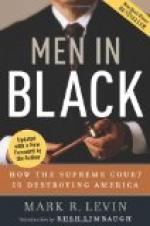“You win,” he said, “but the next time you and I bet on a decision it is going to be one of our cases without a jury.”
The attendant asks for the bill and returns to the jury-room. The court falls into a lethargy of waiting. The jury, having their information, go on with the discussion, probably on the following lines.
“Sure, I told you the silks were worth four hundred dollars.”
“Well, I know those kind of people; they are small people and they never did that amount of business in all their lives, let alone one month.” Or,
“Don’t you know that neighborhood; all the cars speed up whenever they get there.”
“Why, yesterday I was getting off a car and the conductor pulls the bell, etc., etc.”
“No, I ain’t prejudiced against the railroad; I ain’t got nothing against the railroad.”
“Of course, we ain’t going to decide this case on sympathy or prejudice. But that boy’s Irish and he looks like he come of good honest people.”
“Vy, I don’t see no difference whether he is Irish—or Yiddish; vot ve vant is justice.”
“Now see here, my friend, if you think you’re going to make this a racial matter you’re mistaken. Just because that boy’s Irish you needn’t think he ought not to get nothing. You’re prejudiced, that’s what you are.”
“Oh, let’s get down to the evidence anyway; what we want is to decide.”
“Vel, the motorman vas Irish, vot you talking about?”
“Sure, but he had to say what he did. Didn’t he have to hold down his job with the company?”
The rest of the jury sink back resigned and despondent. They will never get out. One of them ventures.
“The judge told us that the law was—”
He is interrupted.
“Oh, we don’t care so much about the law. What we want to do is to do what is right.”
Somewhere, somehow, and by non-understandable methods the verdict is reached. If the jury ask for further instructions, they file back into the court-room and the judge proceeds to elucidate the hidden mystery of the law in much the same manner he did in his charge. They return again not satisfied, and take up the discussion.
The most dramatic moment in the trial is when the officer comes in and announces the jury have agreed. While they slowly file in, the prisoner or the parties watch them with soul-tearing eyes; the lawyers with anxious expectancy. There is an electric thrill in the air. In some mysterious manner their verdict becomes known before the foreman speaks. Call it thought transference, mind reading, or what you will, there is a quick understanding from their faces, their manner of walking in, and their final pronouncement is only a confirmation of what was expected.




